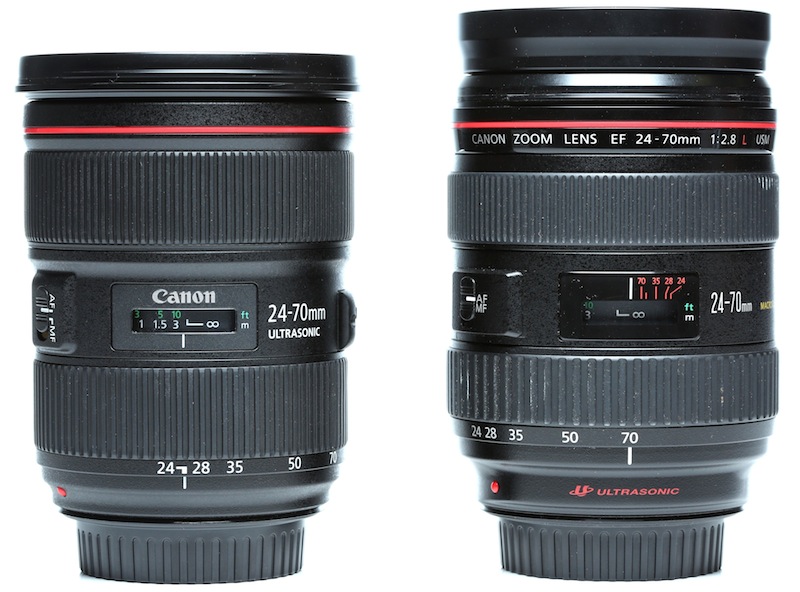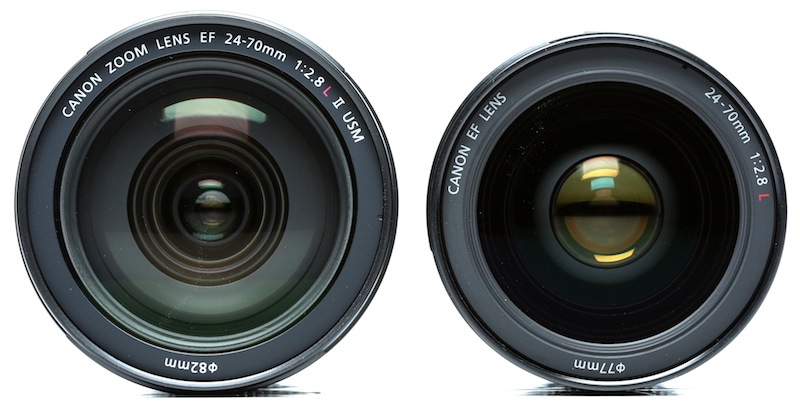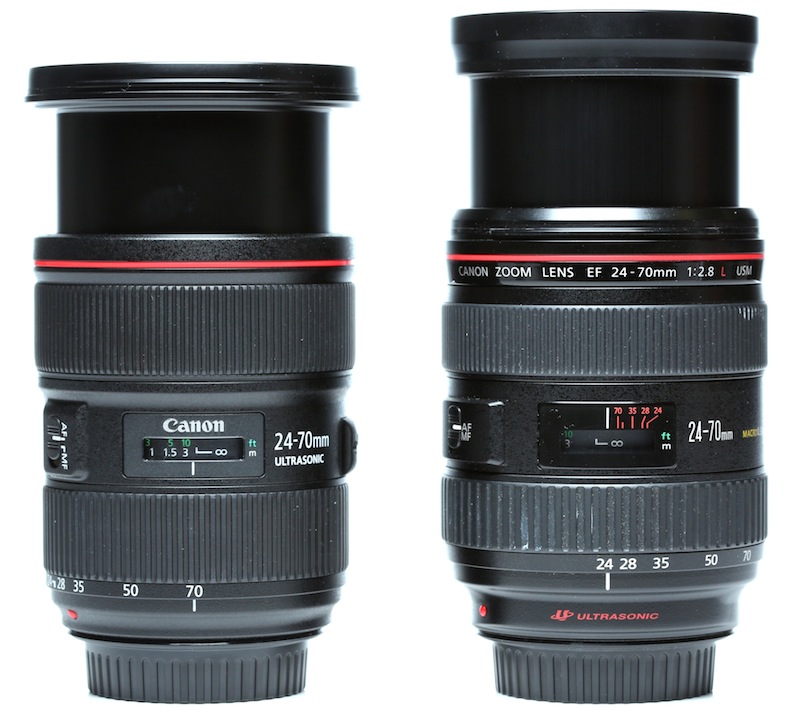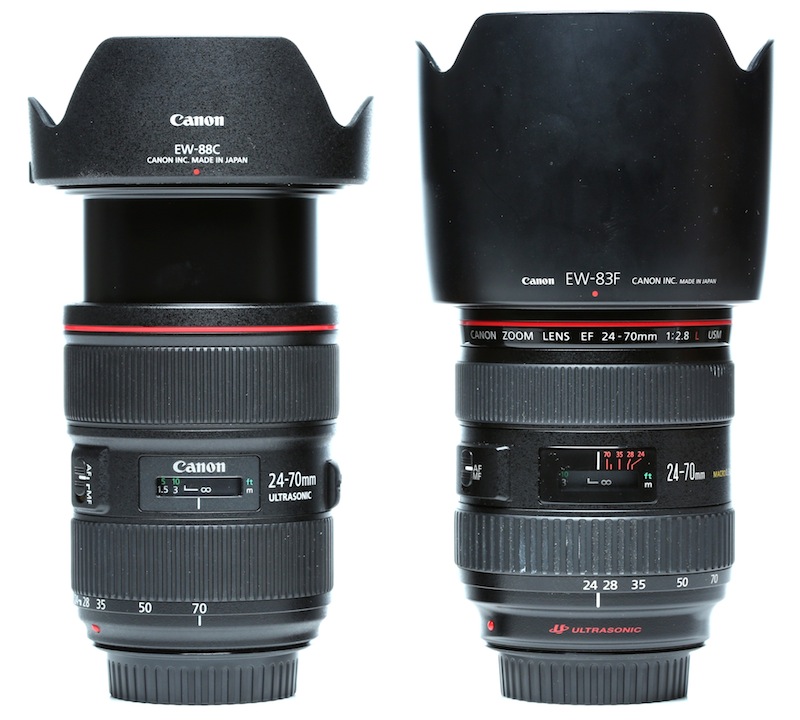Resolution Tests
Canon 24-70mm f/2.8 II Resolution Tests
Here it is, only 6 months after announcement! The Canon 24-70mm f/2.8L II has finally arrived.
I’d love to say something like: “Never have so many forums contained so many threads containing such strong opinions from people who’ve never touched a lens.” But that would be silly. It happens just about every time a new lens is released.
Depending on whose opinion you read, the new lens is either the sharpest zoom every made or an overpriced piece of junk that nobody should buy. It’s been trashed for its price, for not having image stabilization, and for its filter thread size. Posted images made with it have been praised as sharper than primes and condemned as no better than its predecessor.
I can’t say I’m thrilled with the Mk II’s price, but the original Canon 24-70 could certainly be improved on. The original is a good lens, but not up to the standards of, say the Canon 70-200 f2/8 IS II. It definitely has some reliability issues and a lot of copy-to-copy variation, at least some of which relate to its design.
On the other hand, the Tamron 24-70 provides the image stabilization so many people want, but it’s beginning to show some reliability issues, too. Still, it’s $1,300 and has image stabilization. The new Canon is a breathtaking $2,300. For that kind of money it better have world-beating performance. Heck, for that kind of money it ought to carry my camera bag, frame the shots, and do the post-processing for me.
The Usual Disclaimer
This isn’t a lens review. I am not a reviewer. I don’t spend days evaluating a single copy of a lens for all of its traits and characteristics, nor do I take hundreds of really great photos with it and describe how it works in the field.
What I do is test multiple copies of the lens for resolution and other basic stuff. I think that is particularly important with this lens, as its predecessor has, perhaps, more copy-to-copy variation than any high-quality lens I know of.
A Quick Comparison
Looking from the side, the old and new lenses aren’t hugely different. The new one is a bit shorter.

From the front, the larger 82mm filter ring is apparent.

They extend a similar amount but the Mk II is extended when shooting at 70mm, like most lenses, while the old one extends to shoot at 24mm.

With hoods mounted you don’t notice the old version extend, since the hood is fixed and the barrel extends inside of it.

At 1.77 pounds, the 24-70 f.28 II is not a lightweight, but it is a bit lighter than the original 24-70’s 2.1 pounds.
Resolution Results
We measured 5 copies of the 24-70mm f/2.8 II at 24mm and 70mm. For purposes of comparison I’ll add the numbers we know from multiple tests of the original Canon 24-70 f/2.8 and Tamron 24-70 f/2.8. Since the sharpest Canon zoom we have at 70mm is the 70-200 f/28 IS II lens, I’ll add its numbers at 70mm. Just to make it really interesting, I’ll also add our sharpest 24mm lens, the Canon TS-E 24mm f/3.5L II (but remember, we’re comparing it at f/3.5 to the 24-70 at f/2.8).
| Lens | 24mm Ctr | 24mm Avg | 70mm Ctr | 70mm Avg |
|---|---|---|---|---|
| Canon 24-70 f/2.8 II | 954 | 831 | 950 | 809 |
| Canon 24-70 f/2.8 | 730 | 605 | 705 | 570 |
| Tamron 24-70 f/2.8 VC | 815 | 765 | 735 | 655 |
| Canon 70-200 f/2.8 IS II | xx | xx | 885 | 765 |
| Canon24 f/3.5 TS-E | 915 | 775 | xx | xx |
We also checked distortion at both ends. The Mk II has 2.45% barrel distortion at the wide end, 1.34% pincushion at the long end. The 70mm pincushion is exactly the same as the version I lens, while the barrel distortion at 24mm is slightly worse than the original’s 2.15%.
This is short, sweet, and simple. The resolution absolutely, positively kicks butt and takes names. It is way better than the lens it replaces. It’s better at 70mm than the best Canon zoom I know of, the 70-200 f/2.8 IS II. It’s even better at 24mm than the sharpest 24mm prime we have, the Canon 24 TS-E. In the center, in the corners, it doesn’t care. We only had 5 copies to test, but they were all very similar with little copy-to-copy variation.
Resolution is not everything, of course. But it’s certainly an important thing. Unless the real lens reviewers find some dramatic problems with this lens, I’d have to lean towards worth-the-money on this one. I can’t believe I’m saying that a $2,300 standard zoom is worth the money. But then again, I can’t believe I’m seeing a zoom lens out resolve a $2,000 world-class prime, either.
Roger Cicala
Lensrentals.com
September, 2012
Author: Roger Cicala
I’m Roger and I am the founder of Lensrentals.com. Hailed as one of the optic nerds here, I enjoy shooting collimated light through 30X microscope objectives in my spare time. When I do take real pictures I like using something different: a Medium format, or Pentax K1, or a Sony RX1R.
-
Michael
-
Mark Carey
-
Tim
-
Roman
-
Jurjen Drenth
-
Karl R
-
Mark
-
Robert
-
Tony
-
Blaise
-
Cuson
-
Doug R
-
Cecilia
-
Cecilia
-
Deedra
-
Francis
-
John
-
Arun
-
Stu
-
Ryan
